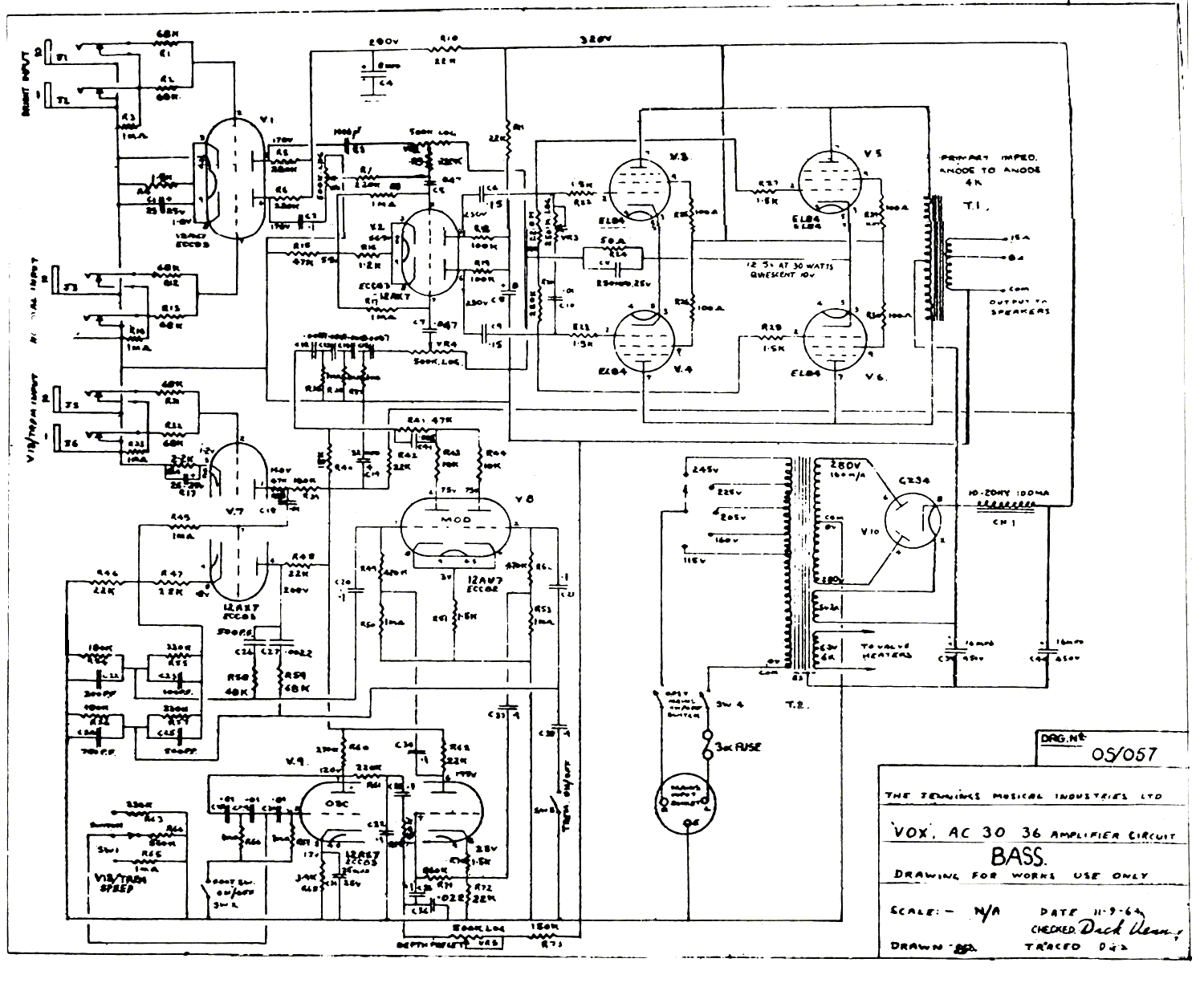I need to have the power tranny of my Silvertone mod. 1482 amp to be rewound.
The tube complement is:
6X4
6AU6
2x 6V6
2x 12AX7
The HT secondary from the (non-original) schematic attached below is 335-0-335V AC.
How do I calculate the ampere rating for this tranny? What is the parameter that I have to use (and how do I use it) from the tube specs sheets?
I need to tell the numbers to the rewind guy.
TIA
--Carlo
Silvertone 1482 #2.pdf
The tube complement is:
6X4
6AU6
2x 6V6
2x 12AX7
The HT secondary from the (non-original) schematic attached below is 335-0-335V AC.
How do I calculate the ampere rating for this tranny? What is the parameter that I have to use (and how do I use it) from the tube specs sheets?
I need to tell the numbers to the rewind guy.
TIA
--Carlo
Silvertone 1482 #2.pdf
 so it might or might not fit.
so it might or might not fit.
 idea of adding 5 extra turns to boost just filament voltage won't work.
idea of adding 5 extra turns to boost just filament voltage won't work. 


Comment